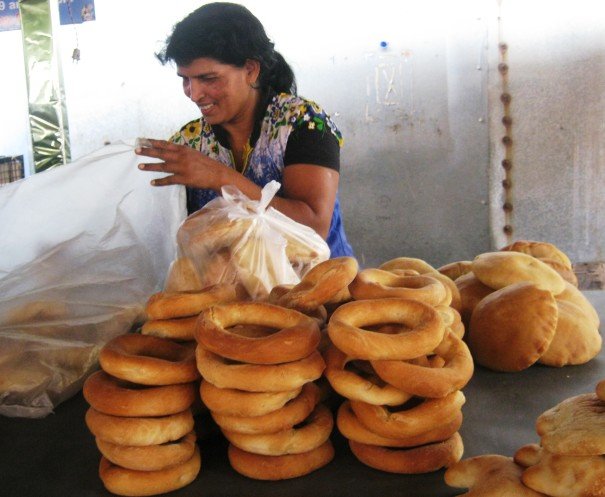
A Good Piece of Bread Can Remind You Who You Are

A Good Piece of Bread Can Remind You Who You Are
Pois in Goa
“I am a Barbie girl, in my Barbie world…”
A beat-up music system is belting out the 90s hit. It is early morning. I am at St Rita, a bakery in Aldona, North Goa. Established in 1964, it is the only remaining bakery with a traditional earthen oven in the area. I am here to pick up some fresh-off-the-oven local breads for breakfast. I am here on a holiday, staying with my cousin.
Bread is a staple at most meals here and comes in many shapes and sizes, as evidenced by the preparations at the bakery. The workers move with ballet-like precision. Palm-sized circles of dough are being rolled out and arranged on stone slabs, dusted with wheat bran, placed on wooden trays, stacked on shelves and left to rise. In one room, prepped dough rounds are being placed deftly into the oven with a long-handled wooden paddle. Some of the dough rounds are snipped with scissors, spread into squares, and baked into butterfly-shaped katre paos. Others are rolled into long cylindrical forms and made into circular ring-like shapes; these are the hard-crusted konkons, a teatime favorite. Small rectangle-shaped dough will be made into pao, small loaves which are buttered for breakfast, used to mop up curries, and wrapped around fritters, much like hot dog buns.
In a couple of hours, the breads will be delivered across the neighborhood via bicycles mounted with baskets covered in blue tarp. Meanwhile, I pick up an assortment from the first batch and head home, inhaling the aroma of freshly baked wheat laced with toddy.
Goa is the only state in India where baked bread is a big thing. Mornings in Goa begin with the ritual purchase of the day’s supply of breads from the poder, an adaptation of the Portuguese pãdeiro, or baker. The Portuguese invaders brought bread to Goa. It was their missionaries who trained locals how to bake bread, albeit using local materials, lacing the bread not with yeast, but with local fermented liquor.
I spent a year in Goa sometime in early 2000, working on an AIDS awareness project. My memories of Goa are punctuated by culinary experiences: of vindaloos and sorpotels, of xacutis and cafreals, and of crusty, chewy warm breads. My favorite was the poi: pita-like wholewheat circles which I’d stuff with cucumber, tomatoes, herbs, and crumbly cheese made in the hills of Kodai. These pockets were wholesome and convenient snacks for busy days in the field interviewing locals about their sex lives. I must have eaten thousands of poi then, and at least a few hundred more on my trips back.
This time, too, my stay has been filled with encounters with pois and paos. On my last day, I have the most divine brunch of chorizo-pao and garlicky, olive-oil drizzled poi with a beetroot salad at Black Sheep Bistro, a new-ish restaurant in Panjim. The chef says he gets the bread from a bakery similar to St Rita, with a wood-fired oven. “It’s just around the corner,” he tells me. He probably recognizes a major fan of all things bread, for he whips out his phone and begins to show photos he has clicked of the bakery. He has just returned from a stretch outside Goa. “Food evokes the past,” he says. “You bite into a poi, and it reminds you of who you are.”